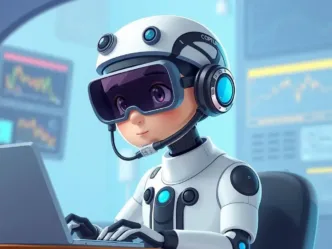Discover the 50 best AI meeting assistants in 2025 lists with our comprehensive guide. Enhance productivity and streamline communication through advanced transcription, action tracking, and insights generation, ensuring efficient meetings tailored to your business needs.
50 Best AI Meeting Assistants in 2025: A Comprehensive Guide and Top 50 List
Introduction
In the contemporary business environment, characterized by an increasing reliance on virtual collaboration, AI meeting assistants have emerged as essential tools for enhancing productivity and streamlining communication. These intelligent software solutions automate tasks such as transcription, summarization, action item tracking, and insight generation, allowing professionals to focus on strategic discussions rather than administrative duties.
As remote and hybrid work models continue to dominate in 2025, the demand for AI meeting assistants has grown, with advancements in natural language processing and machine learning enabling more accurate and context-aware functionalities.
This article provides a formal and comprehensive examination of AI meeting assistants, detailing their definition, core functionalities, benefits, limitations, selection criteria, implementation strategies, and a curated list of the top 50 tools. It aims to equip professionals with a thorough understanding to facilitate informed decisions in optimizing meeting efficiency.
Definition and Scope
An AI meeting assistant is a software application that utilizes artificial intelligence to support and enhance virtual or in-person meetings. These tools typically integrate with video conferencing platforms like Zoom, Microsoft Teams, or Google Meet to perform tasks such as real-time transcription, note-taking, action item extraction, and sentiment analysis.
The scope of AI meeting assistants extends beyond basic recording, encompassing advanced features like multilingual support, integration with project management systems, and predictive analytics for meeting outcomes. Unlike traditional note-taking methods, AI assistants provide automated, accurate, and actionable insights, making them invaluable for professionals in fast-paced environments.
Core Functionalities
AI meeting assistants are characterized by a robust set of functionalities designed to optimize the meeting experience:
- Transcription and Summarization 📝: Automatically transcribe spoken content and generate concise summaries, highlighting key points and decisions.
- Action Item Tracking ✅: Identify and assign follow-up tasks from discussions, integrating with tools like Trello or Asana for seamless workflow management.
- Sentiment Analysis 🧠: Analyze participant tones and emotions to gauge engagement and identify potential issues.
- Multilingual Support 🌐: Provide real-time translation and transcription for global teams.
- Integration Capabilities 🔗: Connect with calendars, email systems, and CRM platforms to automate scheduling and follow-ups.
- Reporting and Analytics 📊: Generate post-meeting reports with insights on productivity, attendance, and discussion themes.
These functionalities collectively transform meetings from time-consuming obligations into efficient, value-driven sessions.
Benefits
The adoption of AI meeting assistants offers several advantages:
- Time Savings ⏳: Automates note-taking and summarization, reducing post-meeting administrative time by up to 50%.
- Improved Accuracy 🔍: Minimizes human error in transcription and action item capture, ensuring reliable records.
- Enhanced Collaboration 🤝: Facilitates better team alignment through shared summaries and task assignments.
- Increased Productivity 📈: Frees participants to focus on discussion rather than documentation, boosting meeting effectiveness.
- Global Accessibility 🌍: Supports multilingual teams with real-time translation, fostering inclusivity.
- Data-Driven Insights 💡: Provides analytics on meeting patterns, enabling continuous improvement.
These benefits position AI meeting assistants as vital tools for modern professionals.
Limitations and Challenges
Despite their advantages, AI meeting assistants present certain limitations:
- Accuracy Issues ⚠️: May struggle with accents, technical jargon, or noisy environments, leading to transcription errors.
- Privacy Concerns 🔒: Recording and analyzing conversations raise data security questions, requiring compliance with regulations like GDPR.
- Integration Complexity ⚙️: Aligning with existing platforms may require technical expertise.
- Cost Implications 💰: Premium features often involve subscription fees, which may be prohibitive for small teams.
- Dependency Risks 😕: Overreliance on AI could diminish critical thinking in discussions.
- Limited Contextual Understanding 🧠: AI may miss nuanced or implicit information, necessitating human review.
These limitations underscore the need for careful selection and implementation.
Selection Criteria
Choosing an appropriate AI meeting assistant requires evaluation of several factors:
- Integration Capabilities 🔗: Ensure compatibility with preferred conferencing platforms like Zoom or Microsoft Teams.
- Accuracy and Reliability 🔍: Prioritize tools with high transcription accuracy and robust error-handling.
- User Interface 👌: Select intuitive interfaces to minimize training time.
- Security Features 🛡️: Verify data encryption and compliance with privacy regulations.
- Scalability 📈: Choose solutions that support growing team sizes and meeting volumes.
- Cost 💰: Compare pricing models, including free tiers and subscription plans.
- Customer Support 🏢: Opt for providers with responsive support and comprehensive documentation.
- User Reviews 📝: Analyze ratings on platforms like G2 or Capterra for real-world performance insights.
Testing free trials or demos can provide practical insights into a tool’s suitability.
Implementation Strategies
To successfully implement an AI meeting assistant, organizations should adopt a structured approach:
- Assess Meeting Needs: Identify specific requirements, such as transcription or action item tracking, to select an appropriate tool.
- Select a Vendor: Research reputable providers, evaluating features, pricing, and user reviews.
- Plan Integration: Ensure compatibility with existing conferencing and productivity tools.
- Train Users: Provide comprehensive training to facilitate adoption and maximize tool utilization.
- Pilot the Tool: Test with a small group of meetings to identify issues before full rollout.
- Monitor Performance: Regularly review tool effectiveness using metrics like transcription accuracy.
- Iterate: Adjust based on feedback to optimize the tool’s impact.
This strategy ensures a smooth integration and sustained value from the AI meeting assistant.
Emerging Trends
In 2025, AI meeting assistants are evolving with technological advancements:
- Advanced NLP Integration 🗣️: Enhanced natural language processing for more accurate transcription in diverse languages and accents.
- Multimodal Analytics 📊: Incorporation of video and audio analysis for deeperinsights into participant engagement.
- Privacy-Centric Design 🔒: Increased focus on on-device processing to minimize data sharing.
- Integration with Virtual Reality 🌐: Support for VR meetings with real-time assistance.
- Ethical AI Practices ⚖️: Emphasis on bias-free analysis and transparent data usage.
These trends reflect the industry’s shift toward more intelligent and user-focused solutions.
Top 50 New AI Meeting Assistants in 2025
The following list of the top 50 AI meeting assistants for 2025 is curated based on innovation, user ratings, and industry impact from sources like G2, Capterra, and Forbes. AI Tools are categorized for convenience, with a brief description of each.
Transcription & Note-Taking Assistants (1-15)
- Otter.ai 📝 – Real-time transcription with speaker identification.
- Fireflies.ai 🔥 – Automatic note-taking and action item extraction.
- Fathom.ai 🌊 – Video recording with AI summaries.
- MeetGeek 🧑💻 – Meeting insights and follow-up emails.
- Avoma 📊 – Conversation analysis for sales meetings.
- Tactiq 🔍 – Live transcription for Google Meet.
- Sembly AI 🤝 – Team meeting summaries and tasks.
- Notta 📋 – Multilingual transcription tool.
- Airgram 📅 – Scheduling and note integration.
- Rewatch 🎥 – Video-based meeting recaps.
- Colibri.ai 🐦 – Real-time coaching during calls.
- MeetRecord 🎤 – Call recording with AI analysis.
- Read.ai 📖 – Meeting metrics and sentiment analysis.
- Supernormal 🌟 – Automated video summaries.
- Poised 🧘 – Real-time speaking coach.
Conversation Intelligence Tools (16-30)
- Gong.io 🎙️ – Sales call analysis and coaching.
- Chorus.ai 🎼 – Deal insights from meetings.
- Clari 📈 – Revenue forecasting from calls.
- Wingman 🦸 – Real-time sales guidance.
- ExecVision 🔎 – Performance improvement analytics.
- Observe.AI 👀 – Call center quality assurance.
- CallMiner ☎️ – Speech analytics for customer service.
- Dialogflow 💬 – Conversational AI builder.
- Amazon Lex 🌐 – Voice and text chatbot creation.
- Microsoft Bot Framework 🛠️ – Custom bot development.
- IBM Watson Assistant 🧠 – Enterprise-grade chatbots.
- Rasa 📚 – Open-source conversational AI.
- SnatchBot 🐶 – No-code chatbot platform.
- Botsify 🤖 – Multi-channel bot builder.
- ManyChat 📩 – Messenger marketing bots.
Virtual Meeting Assistants (31-45)
- Fellow 👥 – Agenda setting and note-taking.
- Krisp 🔇 – Noise cancellation for calls.
- Dubber 🎙️ – Call recording and AI insights.
- Symbl.ai 🔄 – Conversation API for developers.
- Jiminny 📞 – Sales coaching platform.
- Rafiki 🐒 – Meeting intelligence for revenue teams.
- Meetgeek 🧑💻 – AI for meeting productivity.
- Tl;dv 📹 – Video meeting summaries.
- Clari Copilot 🚀 – Sales meeting assistant.
- Wingman Copilot 🦸 – Real-time sales support.
- ExecVision AI 🔎 – Performance analytics.
- Observe.AI for Calls 👀 – Quality assurance.
- CallMiner Eureka ☎️ – Speech analytics.
- Dialogflow CX 💬 – Advanced chatbot builder.
- Amazon Lex V2 🌐 – Enhanced voice bots.
Chatbot and Automation Tools (46-50)
- Intercom 📧 – Customer messaging platform.
- Drift 🌊 – Conversational marketing.
- Ada 🧑🤝🧑 – Automated customer support.
- Bold360 🔄 – AI chat for service.
- ServiceNow Virtual Agent 🛡️ – IT service bots.
Final Thoughts
With these 50 AI meeting assistants, you’re equipped to transform your meetings from mundane to masterful in 2025. Whether you’re looking for transcription accuracy or conversation insights, there’s a tool here to fit your needs. Remember to evaluate based on your specific requirements and budget—happy meeting! 🚀













